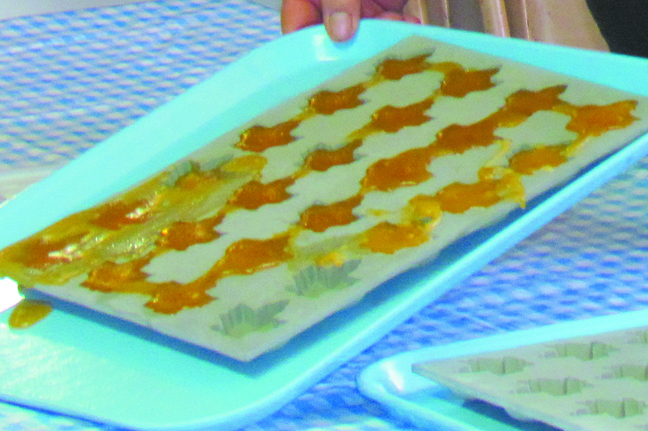Cornell Corner
Factors that influence crystal size in maple products
By STEPHEN CHILDS |
A very important factor in making quality maple value added products is to size sugar crystals so the product feels great to the customers’ mouth. For some products such as maple candy and maple cream a very smooth mouth feel is preferred by most customers. If making maple granulated maple sugar a grainier texture is preferred. Unfortunately it is much easier to make grainy textured creams and candies than smooth textured due to the extra attention required to make sure a smooth texture is accomplished. There are several basic factors that will influence final crystal size. The first factor is the temperature at the time of stirring.
If temperature was the only factor it would be simple. But there are several other factors. The second factor is the invert sugar level of the syrup. The higher the invert the higher the temperature can be and still keep the finer texture. This has a limit, when the invert sugar level gets too high the product may not harden properly leaving a soupy maple cream or sticky maple candy. Syrups with very low levels of invert sugar can be grainy even when stirred at cool temperatures. The equipment used to stir the cream is another important factor.
The faster, more powerful or shocking the stir is the smaller the crystal will be. A gear pump machine, depending on speed, will usually make a smoother cream than a turn table or the candy machine. Seeding can also have an important influence on the texture of the cream or candy. If crystals form on the top or sides of the pan while the cooked syrup is cooling those crystals can “seed” the batch. When cooling syrup is exposed to existing crystals the future crystals tend to copy the size of those early crystals. Purposely seeding (adding finished cream) with a smooth textured cream to the batch just as you start to stir can help create a smooth textured finished product. Seeding a candy batch with some cream can result is smoother textured candy. Another procedure that used to be used much more than it is currently is the making of a fondant to add to a new batch of cream or candy. In this system a batch of stiff and very fine textured cream would be made at least one day prior to candy or cream making day. The fondant would be added to the new batch of cream or candy in a volume of between 20% and 50%. Then the mixed batch of fondant and fresh cooked confection would be stirred together to hopefully create a new smooth batch of fine textured product.
With maple molded sugar or candy the temperature difference at stirring is broader than with maple cream. Over cooling either cream or candy can make things very difficult for some stirring equipment. Cold syrup has been known to stall most any equipment available so it may be good to gradually work your way down to cooler stirring temperatures to try to predict the limits of the equipment you are using.
With granulated maple sugar stirring hot tends to make the larger crystals that make the best textures. At the same time stirring right off the stove may lengthen the time it takes to crystalize. If stirring by hand, this length of stirring time can be of great importance as your stirring arm may surpass its’ endurance. With most other machinery it is not so important. The simple graph below illustrates that the time it takes from when you start stirring to when it is finished will change with the temperature of the cooked syrup. This is true for all confections but probably is more noticeable with granulated sugar as often we are attempting to stir hotter than the idea crystallization temperature. If it is too hot it takes more stirring time to fully crystalize, if it’s too cold it takes more time to fully crystalize, somewhere in the middle is an ideal temperature as far as how long the stirring will take but that is not necessarily the ideal temperature to get the desired texture.
Making quality maple confections means that the maple producer gains a clear understanding of these factors influencing product texture, keeps close control of finish temperature, stirring temperature, invert sugar levels, and seeding and operates as consistently as possible all the time to make consistent high quality maple confections.
June/July 2014
































